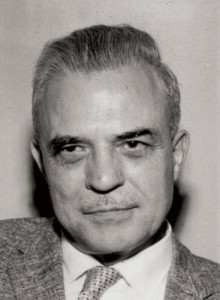
| Born: Dec 5, 1901 in Aurum, NV |
| Died: March 25, 1980 (at age 88) in Phoenix, AZ |
| Nationality: American |
| Fields: Psychiatry |
| Famous For: Hypnotherapy |
Milton Erickson, the famed hypnotherapist, has revolutionized Western psychotherapy. He is considered an architect in innovations in psychotherapy which have been called by some parallel in scope to those of Freud’s. His influence in hypnotherapy is enormous, and most of the hypnotists or hypnotherapists practicing today are using some form of Ericksonian approach.
Early Years
Milton Erickson was born on December 5, 1901, in Aurum, Nevada, a long-vanished silver mining town. When he was five, Albert and Clara Erickson, his parents, moved to Lowell, Wisconsin, and began farming on 80 acres of land. Since childhood, Milton was a different child. He was color-blind, dyslexic and tone deaf. He had an insatiable appetite for reading. During his teens, he started writing for newspapers on various topics.
Health and Personal Life
Milton wanted to become a doctor, but at age 17, he was struck with poliomyelitis. In the process of curing his disabled body himself, he derived the strong relationship between thoughts and healing. His examination of minute details of the relationships between thinking and healing and the effects of mind and body helped in recovering from the so-called severe case of polio. He graduated from the University of Wisconsin with a MA in psychology and MD. He worked as senior psychiatrist in several hospitals across the US.
In 1948, he was appointed as Clinical Director of the Arizona State Hospital. He retired after one year to continue his passion for teaching, writing, and private practice. Later in life, Erickson had another bout with polio and was confined to a wheelchair for the rest of his life. Milton Erickson passed away in March of 1980.
Contributions to Psychology
Erickson’s first encounter with psychology started as a way to overcome physical limitations. Later, he conducted several experiments to find out the therapeutic benefits of hypnosis. In 1973, with the publication of The Uncommon Therapy, Erickson and his approaches were brought to light by Jay Haley.
His practice involved flexibility with respect to each and every patient. Erickson was supremely flexible, adapting his approach to each individual client. He believed that a person’s mannerism, language style, behavior, posture, physical peculiarities and even the presenting complain provide content or material for a therapeutic intervention. Milton Erickson was renowned for his ability to assist people in making dramatic personal change.
Erickson believed in the power of nature to soothe and heal the body. According to him, all surroundings provide solutions, and this helped him create a broader spectrum for psychotherapy. He had a major influence on neuro-linguistic programming (NLP), which was, in some aspects, based on his working methods. Among his best-known innovations, hypnotic hand-shake induction and confusion technique, were quite popular. Erickson’s work on hypnotism was controversial during his lifetime.
Erickson’s Publications
Some of the influential books written by Erickson include Hypnotic Realities, Hypnotherapy- An Exploratory Casebook, Experiencing Hypnosis, The Practical Application of Mental and Dental Hypnosis and Time Distortion in Hypnosis.